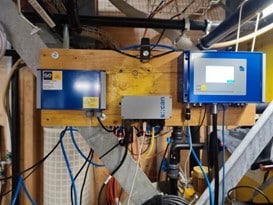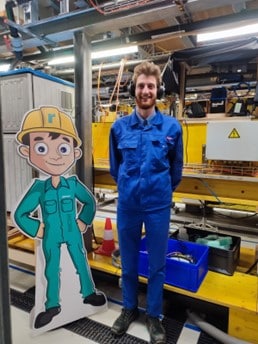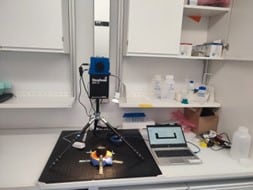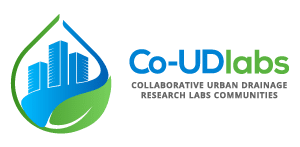Joint Research Activity & Transnational Access Project: Improving understanding of sewer pollution by hyperspectral imaging
Institutions involved
- EAWAG, Switzerland
- INSA Lyon (INSA), France
- Deltares, The Netherlands
- Universidade da Coruña (UDC), Spain
- University of Sheffield (SFD), United Kingdom
- Czech Technical University, Czech Republic
- Geoconcept, France
- Photrack, Switzerland
- Dr.-Ing. Pecher und Partner (engineering consultancy), Germany
Duration
05/2023-10/2023
About the project
This project started with a Joint Research Activity (JRA) which led to a (TA) project. The objective of the Joint Research Activity (JRA) project led by EAWAG was doing laboratory tests of 8 new (market ready or near mearket ready) or emerging (at a low technology readiness level) monitoring technologies. This involved Co-UDlabs project partners EAWAG, UDC, INSA, Deltares and SFD who tested or developed these technologies. The initial good results of this JRA project (the first dataset with lab measurements is included in this publication) included a bench-top lab study of hyperspectral imaging using wastewater and this generated enough interest to create a consortium proposing a follow-up project, as part of the Co-UDlabs Transnational Access (TA) programme.
This TA research project was submitted by the Czech Technical University in Prague and the goal was to determine if hyperspectral imaging technology, one of the 8 monitoring technologies identified in the JRA could be transferred to be used in a wastewater environment as a non-contact sensor.
Good non-contact water quality monitoring to measure water quality in raw wastewater is a goal for many practitioners. Traditional contact sensors, whilst very good when they work, have numerous weaknesses such as susceptibility to fouling, clogging, drift and build-up which results in a high level of maintenance being required, which could be eliminated or vastly reduced if the sensor did not need to be in contact with the water.
Hyperspectral imaging has previously been used with success as a remote non-contact sensing option in natural water bodies but had not been applied to wastewater where it has potential as a pollution monitoring sensor and an alternative to spectrophotometer technology that is in contact with the water. This was a lab-based study that used the camera on stationary samples of wastewater.
The TA allowed for tests to be done on live flowing wastewater in the RI, thus testing the technology in a pilot scale environment close to what would be experienced in a real sewer. This involved a flume experiment with 500 through-samples, absorbance spectra data from spectrophotomater probes, data from electrode sensors, catchment information and dynamic mobility information.
Due to the protocol already being established thanks to the previous experiments performed during the JRA project, the TA project could be more efficient and start immediately with on-site work at the RI.
Main findings
- If Hyperspectral imaging products for the sewer are developed successfully, then it should be relatively easy to install in existing systems.
- Using hyperspectral imaging it is possible to accurately estimate pollutant concentrations for four water quality indicators of interest: turbidity, TDN, NH4–N,and PO4–P. A. It can also satisfactorily predict aggregate organic constituents (COD and DOC).
- The use of non-contact sensors allows to better monitor stormwater systems, enhance full-scale experiments which in turn help improve existing models.
- One potential challenge to the use of this new technology is that potential customers have not been exposed to this technology before, so they don’t necessarily know how best to apply it and need time to be trained.
Successful outcomes:
- Developing this technology creates improvement in water management practices by allowing for better monitoring water levels and water flows, and for better water quality data to be collected. This makes it possible to prioritise rehabilitation measures and better assess pollutant loads into the environment.
- The PhD student participating in the JRA project could develop a side project (external to Co-UDlabs) at SUEZ’s experimental research centre near Versailles (France) with the help of EAWAG. This interest from important stakeholders such as SUEZ shows that the question and the solution being investigates are relevant.
- As a result of the trial done in the TA project, researchers obtained an R&D research grant from the Swiss Government (Innosuisse funding program) to progress the commercialisation of the technology.
Useful links:
- Report on technologies tested in the JRA: https://zenodo.org/records/7261621
- Conference paper: https://zenodo.org/records/7268264
- Journal paper: https://zenodo.org/records/12602120



